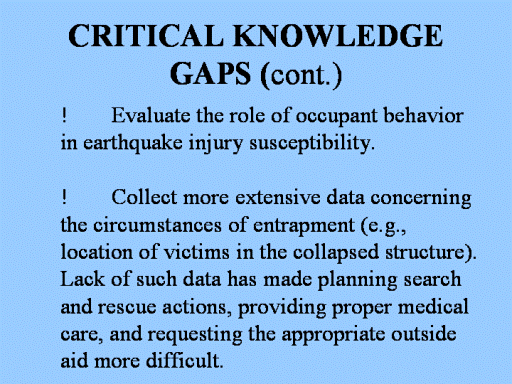| front |1 |2 |3 |4 |5 |6 |7 |8 |9 |10 |11 |12 |13 |14 |15 |16 |17 |18 |19 |20 |21 |22 |23 |24 |25 |26 |27 |28 |29 |30 |31 |32 |33 |34 |35 |36 |37 |38 |39 |40 |41 |42 |43 |44 |45 |46 |47 |48 |49 |50 |51 |52 |53 |54 |55 |56 |57 |58 |review |
 |
!
Formally evaluate the effectiveness and appropriateness of
the different methods and strategies of search and rescue (128).
!
Integrate knowledge obtained from different disciplines.
Most earthquake casualty studies have addressed the problem
from the point of view of a single discipline, either that of
engineers or that of health researchers.
This lack of active collaboration between workers from
different disciplines has been a major shortcoming of past research
into the health effects of disasters.
Successful epidemiologic studies will require close
interdisciplinary collaboration among structural engineers,
physicians, and epidemiologists.
|